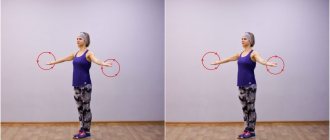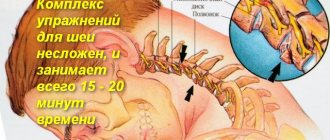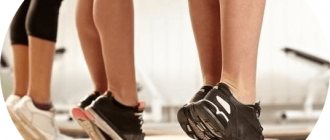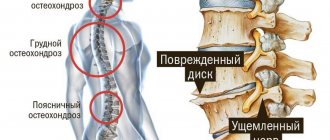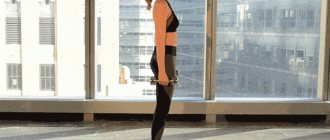Charles Atlas did not set fantastic records and did not win prestigious titles, which, however, did not prevent him from becoming a cult person in world bodybuilding. His main legacy is a set of isotonic exercises that has withstood a barrage of criticism, but has proven its validity and effectiveness. Our story about the life path and exercise system of Charles Atlas.
Rise of the Titan. Biography of Charles Atlas
So, let's see where the rise of the titan began. Charles Atlas (real name Angelo Siciliano) was born on October 30, 1892 in the small Italian town of Acre. In 1904, our hero’s family moved to the USA, settling in the oldest district of New York, Brooklyn. His father was soon forced to return, and adult life began for 12-year-old Angelo. In order to somehow help his mother, he gets a job in a leather workshop. Hard work, life from hand to mouth, constant humiliation and beatings from peers only strengthened the character of the future titan of bodybuilding.
One day he went on a tour of the Brooklyn Museum, which changed his life forever. The young man was indescribably delighted at the sight of sculptures of Greek gods and heroes. Their ideal proportions amazed the imagination, and from that day Angelo firmly decided that he would turn his body into the standard of male beauty.
But how can you achieve this if you can barely make ends meet? Siciliano does not give in to difficulties. He watches the training of local athletes, attends performances of strongmen, adopting their techniques and diet. He scrupulously studies every article of the authoritative sports magazine “Physical Culture”, trying to implement the acquired knowledge. With particular trepidation, he watches the successes of Evgeniy Sandov , who becomes his idol. However, all efforts do not bring the desired result, forcing the young athlete to look for new ways. Nature itself showed him the right path.
While visiting the zoo, Angelo involuntarily admired the behavior of the lion. The formidable predator slowly and with truly royal dignity stretched, alternately tensing each muscle of his powerful body. And then the young man had an epiphany. He stopped weight training and began implementing his own technique, which would later be called isotonic exercise.
The result exceeds all expectations. Very soon, from being an object of ridicule, the guy becomes an example for envy and imitation. Angelo's successes do not go unnoticed. He is invited to advertise sporting goods in one of the elite stores. Soon he begins a successful career as a circus performer, performing power routines.
Professional career and worldwide popularity
A new stage in Charles Atlas's professional career began after meeting socialite Gertrude Vanderbilt Whitney. Thanks to her patronage, he becomes a model for sculptors. Many of the statues for which Atlas posed still adorn buildings in cities such as Washington and New York.
In 1921, the magazine "Physical Culture", so valued by Charles, announced a competition for "The Most Handsome Man in America". The winner was promised an impressive fee of a thousand dollars for those times. The Brooklyn Titan also decided to take part. He sent his photo to the editor and quite unexpectedly turned out to be the winner. Success gave him self-confidence, and a year later Charles Atlas was awarded the title of “The Most Perfect Man in the World” according to the same magazine.
From that day on, he gained worldwide popularity. Fans flooded Charles with letters begging him to share the secrets of his professional skills. The enterprising athlete quickly realized that he could make good money from this. In 1924, he met the medical consultant of the Physical Culture magazine, Frederick Tilney. Together they developed a training program, thanks to which they quickly created a very profitable business.
Everyone was sent a brochure with a detailed description of the training. The fundamental feature of this technique was that all exercises were performed without any special sports equipment. In 1929, Charles Roman became Atlas's agent and business partner. Being a PR man from God, Roman managed to popularize his companion’s program and called it “Dynamic Stretching”. About one and a half million similar publications were sold worldwide, at a price of $30 apiece. Atlas himself, in addition, was engaged in the production of sports nutrition, in which he was quite successful.
For critics and spiteful critics, the achievements of Charles Atlas became the proverbial red rag, spurring them to take action. Atlas was accused of fraud, and his system was called a dummy. The matter came to a trial, during which the athlete managed to defend his good name, but his business noticeably declined.
Model business
Chance brought him together with Gertrude Vanderbilt Whitney. This was a very famous lady in bohemian circles. Thanks to meeting her, Atlas became a model for sculptors. Among the sculptures for which he posed are Alexander Stirling Calder's Washington at Peace (1917-18) in Washington Square, Pietro Montana's Dawn of Glory (1924) in Brooklyn's Highland Park, and James Earl Fraser Alexander Hamilton (1923) in the Treasury Building in Washington.
Charles Atlas shows side chest
But all this could not satisfy him for long. In 1921, he took part in a competition held by Bernard McFadden, publisher of his beloved journal Physical Culture. This competition revealed the most handsome man in America, and the winnings in it promise a lot of money - as much as $1,000. Charlie sent McFadden his photo and... won.
Success inspired him, and when a year later McFadden announced a competition for the title of the most physically perfect man in America, Charlie, without hesitating for a second, took part in it. And it was the victory in this competition that became a turning point in Charles’ life.
Letters came to him in batches. Almost everyone asked the question: how should you train and eat to achieve the same results? He realized that such popularity could result in considerable benefits for him.
In 1924, McFadden directed Atlas in the short film The Road to Health. During filming, Charles met a British homeopath and part-time consultant for McFadden's magazine, Frederick Tilney. Together they came up with the idea of releasing a training program called “Health & Strength by Charles Atlas.” They sent a brochure by mail to everyone who wanted to train on their own for $30. The main advantage of such a system was that no equipment was required for training; anyone could afford it.
Charles' investments were limited to advertising costs. For the first six months, the couple used the Tilni house as an office. Things went well, but in 1928 something went wrong... In 1929, Tilney sold his part of the business to Charles R. Roman and moved to Miami, Florida, where he quite successfully took up healthy eating and succeeded in this field.
Charles Roman undoubtedly had a commercial spirit and was a very talented advertising agent. His most famous advertising campaign for Charles was called "Mack's Grudge." In it, a skinny guy throws sand at people passing by, his girlfriend says: “Don’t act like a little boy!”, after which she orders him a course of exercises by Charles Atlas. The boy trains a lot and turns into an athlete.
Charles Atlas in adulthood
Success befell Atlas. He received hundreds of letters a day. People from all over the country asked his advice. However, there were also envious people. They questioned the effectiveness of his training system. Bob Hoffman, publisher of Strength and Health magazine, argued that Dynamic Stretching was just a big name and that Charles himself was a simple liar. He suspected Atlas of using heavy weights other than "dynamic tension." The matter reached official proceedings.
This was not the last time Charles Atlas's exercise system was questioned. In 1955, a correspondent for Ironman magazine dumbfounded Atlas in an interview with the question of whether he used barbells and dumbbells in his training. With great feeling, Charlie told him that he had never used weights in training in his life.
The last years of the life of Charles Atlas
Despite his popularity, Charles Atlas was a very modest man and an exemplary family man. Together with his wife and two children, he lived all his life in a small apartment, giving a significant part of his income to charity. In 1965, Atlas's wife, whom he loved immensely, died. For the former athlete, this was a huge shock.
He moved to Miami and bought a house on the beach. Many vacationers noticed a gray-haired, but handsomely strong man training on the beach. Atlas did not change his life's work until his last day. In the last years of his life he suffered from diabetes, which subsequently led to joint damage. The “Brooklyn Titan” died on December 24, 1972, at the age of 80.
human anatomy
Human anatomy is the science of the structure of the human body, its constituent organs and systems. Human anatomy deals with the study of the human body according to the function it performs, development and environment. It is considered impossible to imagine the structure of the human body without its individual formations that perform certain functions.
When considering the structure of the human body, the first attention is paid to the skeleton. There are 2 fundamental functions of the skeleton - mechanical and biological. In order not to go into specific anatomical details, we can simply note that the skeleton is the foundation for the entire human body, it is a support for internal organs and a lever that activates the human muscles, allowing independent motor functions, namely walking, running, jumping, swimming, etc.
The next important component of human anatomy is muscles. Muscles are the active part of the human locomotor system. It is the muscles that allow a full variety of movements between different parts of the skeleton, movement of a person, and fixation of individual parts of the body in various positions. The muscles also activate human speech, respiratory function, swallowing and chewing. In addition, muscles influence the location of internal organs, promote normal blood flow in the body, and take an active part in metabolism. The human body has about 600 different muscles.
Full functioning of the human body is impossible without internal organs. These organs are located inside the human body, mainly in key cavities (thoracic and abdominal). At the same time, there are also organs that are located in the neck, head and pelvic cavity. The most direct function of the internal organs is to actively participate in the metabolic process. Internal organs usually include: digestive organs, respiratory organs, urinary organs and genital organs. Due to the fact that these organs pass food, air, urine and reproductive cells through themselves, they are basically tube-shaped. The remaining internal organs that do not have internal cavities are called parenchymal internal organs.
The material presented in the atlas of human anatomy is not limited to the idea of only the structure of the body, but shows the human body as a single whole.
Training system developed by Charles Atlas
Let's consider the training system of Charles Atlas using the example of a series of isotonic exercises:
1. Exercise to strengthen the calf muscles. We stand up straight with our feet slightly narrower than shoulder width. Slowly, with tension, we rise onto our toes and lower ourselves back down. To increase resistance, place your toes on a step or other solid support. If necessary, the exercise can be performed with weights. Perform for 10 repetitions.
2. Exercise for the thigh muscles (quadriceps) and buttocks. Feet shoulder-width apart, hands on the waist. We perform deep squats all the way to the floor, resting only on our toes. To begin with, you can practice squatting on a flat foot. Number of repetitions – 12.
3. Exercise for the spine. We stand up straight. We bring our feet together, clasp our palms behind our heads. We bend over, trying to touch our elbows to our knees and return to the starting position. Don't forget to keep your legs straight. Perform for 12 repetitions.
4. Exercise for the abdominal muscles. A complicated version of the well-known “bicycle”. We lie on our backs, raising our legs and bending them at the knees at a right angle. We put our hands behind our heads. We begin to slowly turn imaginary pedals. At the moment when the right knee is at the top, lifting the body, we reach for it with the left elbow. Then we repeat the same with the left knee and right hand. We work until we feel fatigue in the muscles.
5. Another good abdominal exercise. We sit on the floor with our legs stretched straight in front of us. We rest our hands on the floor behind us. With a quick movement, we raise our legs so that they form the letter V with the body, then slowly lower them back. We do it to the best of our ability.
6. To strengthen the muscles of the arms and shoulder girdle, Charles Atlas recommended simple but effective push-ups performed with tension throughout the whole body. Increasing the load to work different muscle groups can be achieved by changing the width of the arms.
Charles Atlas's training system is designed to work with your own weight. The entire set of isotonic exercises should be completed in 10 minutes, but for untrained people this may take 3-4 times longer. It is important to remember that this is a workout not for speed, but for results, so pay close attention to the technique of performing each element.
Charles Atlas about lifestyle
To achieve results in sports, Charles Atlas recommended getting rid of addiction to alcohol and tobacco, and going to bed no later than 22:30. In addition, he became a symbol of morality for many Americans. He advised him to give up vices and observe moderation in food and sex. Despite his enormous popularity among the fair sex, the athlete did not cheat on his wife. All this helped the “Brooklyn titan” not to lose fame, even when he stopped performing power tricks.
Personal life
Charles Atlas was a very unpretentious person. Despite his extreme popularity, he lived his entire life with his wife and their 2 children in a four-room apartment in Brooklyn.
Atlas preached a healthy lifestyle all his life, did not drink, did not smoke, and advised his followers to lead a healthy lifestyle: go to bed on time (no later than 22:30), do not indulge in passions. He said: “let your thoughts and hearts be pure.” He never cheated on his wife, despite his popularity. In Puritan America, this brought him wide popularity and made him a role model for many.
It was once estimated that more than 1.5 million people from all over the world paid 30 bucks for Charles Atlas’s exercises. It seems that the majority actually benefited from his program. Atlas also did a lot of charity work.
In 1965, his beloved wife died. This was a huge blow for him, which he could not bear. He bought a house in Florida and moved there. However, no tragedy could force him to give up training. People walking along the beach often saw him working out, gray-haired but still as physically fit as he was in his youth.
Charles Atlas in old age




